Rome, Italy Winter 2022 (7 Days) Welcome back to 3WishesTravel Blog! We are exploring cities across Italy and the best way to enjoy them as a solo traveler. This post will focus on Rome, Italy, a city overflowing with history, beautiful architecture, and world-famous art.
Check out our Travel Jewish: Rome post and stay tuned for our guides to Milan, Venice, Bologna, Florence, and the Vatican! Remember to like us on Facebook and follow @3WishesTravel on Instagram for updates! Also, check out the new sections of the website, including Upcoming Trips and interactive maps of Countries and States I have visited. Now let's fly to Rome! 🧞♀️💜✈️

Table of Contents
Centro Storico neighborhood
Ripa neighborhood
Monti neighborhood
Spanish Steps - North Rome neighborhood
Esquilino neighborhood
Prati neighborhood
Tiber Island and Trastevere neighborhood
Centro Storico neighborhood
The Pantheon
Finished in 125 AD, the Pantheon is the oldest and best-preserved example of a Roman temple. Historians' understanding of the creator of this architectural marvel has changed and still can be considered up for debate. At first, people thought it was Marcus Vipsanius Agrippa, the right-hand man of the first Roman emperor, Augustus. Agrippa was known as a talented war commander, architect, and engineer, active from the early 40s BCE until 12 BCE. He was believed to be the creator because it is his name that is attributed on the front of the structure. Many Roman structures inscribe the name of the builder onto the front of the structure. The front of the Pantheon reads
"M[arcus] Agrippa L[ucii] F[ilius] Co[n]s[ul] Tertium Fecit”
“Marcus Agrippa, son of Lucius, thrice Consul, built this”
But recent historical findings, principally bricks from the building with dated imprints, revealed that the Pantheon was built much later, in the 110s AD. Today, popular knowledge attributes the Pantheon to Hadrian, the emperor of Rome from 117-138. Other historians have said the designing and building of the Pantheon started during emperor Trajan's reign, ending in 117.
The original purpose of the Pantheon is understood to be a Roman temple. The word Pantheon in Latin means "temple to/of all gods". It is thought to stand on the place Romulus, the founder of Rome, ascended to the heavens and became a god. Both gods and emperors have been displayed in the Pantheon, making it a symbol of the connection between divine power and Roman emperors.
The Pantheon holds the world's second-largest unreinforced concrete dome, a perfect half-sphere. The bottom square half of the Pantheon would perfectly hold the other half of the dome's half-sphere. At the center of the dome is a small open oculus, a window to the heavens, the only source of light in the Pantheon and possibly was used to tell time. The front of the Pantheon hosts tall Egyptian granite columns all 40 Roman feet tall, creating a grand portico.
The Pantheon was converted to a Catholic Church in the 7th century by Pope Boniface IV. Later on, it became known as Sanctae Mariae Rotundae (Saint Mary of the Rotunda), where Popes would often hold Lent masses. The Pantheon continues to hold mass every Sunday to this day.
The Pantheon is one of the most intimidated structures in the world, inspiring many buildings including many of the most important American government buildings. The Jefferson Memorial, US Capitol, the Pantheon of Paris, and many other buildings across the US and Europe all honor the Roman Pantheon.
Obelisco del Pantheon

Built by pharaoh Ramesses II in 13th century Egypt, the Obelisco del Pantheon and its twin obelisk were brought to Rome in the 14th century. About 6 meters tall, the red granite obelisk matches the obelisk in Villa Celimontana.
Piazza Navona
Piazza Navona
The Piazza is located in the spot of the ancient Stadium of Domitian and still honors its layout with its long oval shape. Many cafes and shops line the Piazza and create a bustling environment both day and night.
Fontana dei Fiumi
{Fiumi Fountain}
Created in 1651 by Gian Lorenzo Bernini, the Fountain of the Four Rivers is made in Baroque style from Travertine stone with an Egyptian obelisk centered in the middle. Built as a reminder of the power of the Pope, it features four fivers, the Ganges River, the Nile River, the Rio de la Plata, and the Danube River.
Sant'Agnese in Agone
Another example of Baroque architecture, the Sant'Agnese in Agone church was built in the 17th century commissioned in honor of the Saint Agnese of Rome by Pope Innocenzo X, and designed by Francesco Borromini. Today the church hosts chamber music concerts and like all churches in Rome, is free to enter for guests.
Fontana del Nettuno {Fountain of Neptune} Created in 1574 by Giacomo della Porta, the marble fountain features Neptune his sea monsters, mermaids, and dolphins. Another beautiful example of a Roman fountain.
Torre Argentina Cat Sanctuary
Cats can be seen across Italy lounging, napping, and playing within ancient ruins. Torre Argentina Cat Sanctuary was founded in the ruins of Torre Argentina, a complex of temples that also served as Curia of Pompey the temporary home of the Roman Senate. General Gnaeus Pompeius Magnus built this meeting space around 60 BCE in honor of his great military achievements.
The Curia of Pompey served as a meeting space for the Roman Senate. The Roman Senate was a governing body serving various purposes throughout its very long history. The Roman Senate was founded at the same time as the city of Rome itself. Its power ranged throughout the years, at first starting out as an advisory board for Roman kings, growing in power slowly until the transition into the Roman Principate where constitutional reforms took away the majority of its authority. Julius Caesar moved the Curia from their normal meeting spot, damaged by a 52 BCE fire, to the Curia of Pompey. Caesar became dictator for life early in 44 BCE, which the Senate resented. That same year on the Ides of March during a meeting of the Roman Senate, Julius Caesar was murdered here by 40-60 Senators. Their goal was to save the Roman Republic, but it had the opposite effect, descending Rome into civil wars and eventually the establishment of the Roman Empire.
Today, the site is home to Torre Argentina Cat Sanctuary and its ~100 resident kitties! The cats walk through the ruins of the Torre Argentina temple complex, playing, napping, and exploring. This site has been an unofficial home for cats since its excavation in 1929, but it became official in 1993 with the founding of the Torre Argentina Cat Sanctuary nonprofit. Volunteers feed, play, and offer vet care for these kitties every day of the week. The Cat Sanctuary also has an indoor area where volunteers care for sick and disabled cats. It is free to visit but donations are always accepted. Make sure to check out the gift shop and its cute Cat Sanctuary merchandise. Another way to help the Torre Argentina Cat Sanctuary is through adoption; they offer real adoptions and distant adoptions. Distant Adoptions offer the opportunity to receive frequent updates about your sponsored cat. Consider distance adopting for these beautiful cats in need, you can even pick which cat you would like to adopt through their website!
Piazza del Campidoglio
Piazza del Campidoglio sits atop Capitoline Hill looking over the Roman Forum. This square was designed by Michelangelo, commissioned by Pope Paul III in 1536. Today it remains one of the most beautiful and well-designed squares in all of Rome. It is a center for art, archaeology, and history, especially with the Capitoline Museums lining the square.

Fontana della Dea Roma
{Fountain of the Goddess Roma}
Made from beautiful marble and red porphyry stone, this statute also functions as a fountain. Although Capitoline Hill did not have water when it first opened, 50 years later the construction of the Felice Acquaduct brought water and functioning fountains to this center for Roman art. The Goddess Roma was Rome's representative deity showing the military as well as cultural strength of the Roman empire. She sits in the middle of the Palazzo Senatorio facade under its main entrance.

Features on the right and left of the Fontana della Dea Roma are two male statues representing two of the strongest rivers in the Empire: the Nile and the Tiber. Pictured here is the Nile River indicated by the Sphinx resting under the River god's arm.
Palazzo Senatorio {Senatorial Palace}
The Palazzo Senatorio faces the Vatican as Michelangelo designed in 1538. Its key architectural design is the double Renassise style staircase flanking both sides of the entrance. This building was known as the Tabularium which housed all of the records of the Roman government. In 1870, Palazzo Senatorio became Rome's City Hall, a familiar purpose as the Palazzo Senatorio also served as a seat of government in the 12th century. Today, the Palazzo Senatorio holds Roman city government offices so tours are limited to one Sunday per month.
Capitoline Museums: Palazzo dei Conservator and Palazzo Nuovo
Located on opposite sides of the Piazza del Campidoglio, these two stately buildings house famous Italian art, frescos, and sculptures. Bernini's Bust of Medusa, Caravaggio's St. John Baptist, and the Statue of the Capitoline Venus are a portion of the magnificent collection at the Capitoline Museums. The Museum opens at 930 am and tickets cost €13 for adults.
Equestrian Statue of Marcus Aurelius
The central point of the Piazza del Campidoglio is the 14-foot tall bronze statue of Marcus Aurelius mounted on a horse. This statute was originally created between 176-180 AD, although the statute sitting the square is a replica and the real one sitting within Capitoline Museum. This is the only one of the 22 equl magnl or equestrian statutes to survive to the present. Pope Paul III moved the statute to Capitoline Hill in 1538 and had Michelangelo refurbish the statute during his work creating the Piazza del Campidoglio, a unique example of Michelangelo's contribution to civic life.

Cordonata Capitolina
Leading up to the Piazza del Campidoglio is a large gradual walkway beginning on Via del Teatro di Marcello by the Piazza d'Aracoeli. The steps are wide and slowly sloping to allow horses to climb up and down! The top of the stairs looks onto the Palazzo Senatorio and the rest of Michelangelo's square.
Basilica di Santa Maria in Ara Coeli

{The Basilica of St. Mary of the Altar of Heaven}
Built as a combination Romanesque and Gothic style in the 6th century, the Basilica of St. Mary of the Altar of Heaven sits atop Capitoline Hill next to Piazza del Campidoglio. The church counts the Roman city government among its parishioners a tradition held since its founding. The inside of the church is breathtaking, especially its large golden frescos. Visits can be made starting at 7am every day for free!
Fontana di Trevi
One of the best-known fountains in the world, this 17th-century Baroque masterpiece was designed by Nicola Salvi. The Trevi fountain took 30 years to complete and had to be finished by fellow architect, Giuseppe Pannini. Legend has it that visitors who toss a coin into the 85 foot high Trevi fountain are destined to return to Rome. Fontana di Trevi features Greek mythological figure, Oceanus, pulled by sea horses and tritons.
Ripa neighborhood
Circus Maximus
Located between Palatine Hill and Aventine Hill, Circus Maximus was a massive stadium primarily for chariot racing including the Roman Games every September. The largest in the Roman empire, Circus Maximus could host 250,000 people on its stone and wooden seats. The sand-covered track is the centerpiece measuring over 1,771 feet long with a "spina" or decorative barrier in the middle. The opposite end of the track had 12 starting gates for the horse-drawn chariots to line up before a race. People placed bets on the races and many from high society would attend since its beginning in the 6th century BCE. The physical size of Circus Maximus is breathtaking, imaging 250,000 screaming fans during a chariot race at this exact location for thousands of years. The last chariot race at the Circus Maximus was in the 6th century CE, but even today the site is host to concerts, rallies, and makes the perfect running route.
Middle Image Source: worldhistory.org/Circus_Maximus/
Santa Maria in Cosmedin
Within the Ripa neighborhood on the bank of the Riber Tiber sits Santa Maria in Cosmedin, a 6th-century basilica named after the Greek word "kosmidion" translated to ornamented. Its intricate floor mosaics are the star of Santa Maria in Cosmedin. The tall Medival-style tower reaches into the Roman sky. The Church is free to visit, as is every church in Rome, and opens at 9:30 am!

Bocca della Veritá
{Mouth of Truth}
Modeled after sea titan god Oceanus, the Mouth of Truth is the ultimate test of faithfulness. Legend has it that a mistrustful partner brought their spouse to the Mouth, placed their partner's hand into its stone mouth, and asked them if they had been cheating. They lied and told them they had not cheated, so the Mouth of Truth bit their hand off! If you lie with your hand stuck into the mouth of the sculpture, you will get your hand bitten off. Test your friends with the Mouth of Truth, located within Santa Maria in Cosmedin.

Tempio di Portuno
{Temple of Portunus}
Along the Tiber river, the Temple of Portunus is one of the only Roman temples to survive from the 1st century BC. Made from travertine and tuff, the outdoor portico combined with a walled-off inner area is a unique feature from Roman temples. Tempio di Portuno is dedicated to the Roman god Portunus, the protector of harbors and voyages. Thus, the placement of this Temple on the banks of the river Tiber is perfect so fisherman and boat captains could honor Portunus before they set out on a nautical journey.

Temple of Hercules Victor
Dedicated to Hercules in the spot of his tenth labor during the Heroic Labors of Hercules legend, the Temple of Hercules Victor is the only remaining Greek marble structure from ancient Rome. This temple is known to be the work of Hermodoros of Salamina during the 2nd century BC. Intricate and remarkable Corinthian columns surround the Temple in a circular shape. Located along the Tiber river next to Tempio di Portuno, both are great stops on a walking tour of the historic Ripa neighborhood.
Temples of Apollo Sosiano and Bellona
Although the Temple Apollo Sosiano was built a long time ago, in 433 BC, it was built under similar circumstances. After a plague hit the city, this temple was created and dedicated to Apollo Medicus, a Roman healer. Temple Apollo Sosiano is one of the oldest in Rome with the two columns standing triumphantly to this day.
Within these ruins also stood the Temple of Bellona, built in the 3rd century BC in honor of the Roman Goddess of War after Appio Claudio Cieco's war victory. Senate meetings occurred both in this Temple as well as the Temple Apollo Sosiano. Many war-related honors were bestowed in the Temple of Bellona as well as declarations of war.
Marcello Theater

Started by Julius Casaer but finished by Augustus in 13 BCE, the Marcello Theater was at one point the largest and most popular theater in Rome. Named after Marcus Claudius Marcellus, Augustus's nephew and a talented military commander, the theater could hold up to 20,500 people seeking to catch a show. Typical shows involved the arts, events like plays, music contests, and poetry recitals. This was a cultural center of Rome, but, as gladiatorial games at other theaters became more and more popular with the Roman public, the Marcello Theater was left behind. Thousands of years passed and like many iconic Roman sites, the Theater was quarried for its stones and metal, leading to disrepair. Eventually, it became privately owned by wealthy Italian families who added the third floor of apartment blocks. Today, it is an upscale apartment complex known as Palazzo Orsini up for sale at €20-30 million!
Casina dei Pierleoni
Built on the slope of Capitoline Hill, a medieval home possible owned by the Pierleoni noble Roman family in the 11th century.
Fasces Symbol
This symbol of a bundle of rods tied together with an ax blade can be seen across Rome. Once a symbol of government in Ancient Rome, Benito Mussolini adopted the fasces to represent Italian fascism. The flag of the National Fascist Party features the faces. Merriam-Webster defines fascism as " a political philosophy, movement, or regime (such as that of the Fascisti) that exalts nation and often race above the individual and that stands for a centralized autocratic government headed by a dictatorial leader, severe economic and social regimentation, and forcible suppression of opposition." Benito Mussolini was the founder of the National Fascist Party from 1919 to 1945, Prime Minister of Italy from 1922 to 1943, and Duce of the Italian Social Republic from 1943 to 1945.
Monti neighborhood
The Colosseum
Construction on the Colosseum took about 10 years finishing in 80 CE. Sponsored by emperor Vespasian, the Colosseum was created as a gift to the Roman people after the tumultuous and exploitative reign of emperor Nero. The Colosseum was built in the middle of the drained central lake of Nero’s Golden Palace in an effort to give the land back to the public and change its symbolism of grandiose use of imperial power at the expense of the public.

The Colosseum was created to hold 50,000 Roman citizens for imperial-sponsored entertainment, including animal fighting, hunts, and gladiatorial combat. The more eccentric shows involved shipping exotic animals like giraffes, lions, and elephants thousands of miles to Rome and hunting or fighting them. Another show involved flooding the entire stage area to host mock naval battles. Tickets to the games were free but people were seated according to social order. Senators and other government officials sat in specially inscribed assigned seats on the first level of the stands. Emporers also had their own seating, located on the first level and shaded from the sun of course. Then, the higher you went up into the stands, the lower your social class. The very top level of the Colosseum hosted the everyday Roman. Everything was paid for by the government both to give back to the public and show off the Empire’s wealth and power.
The Colosseum was engraved with “Imp. Caes. Vespasianus. Aug. Amphitheatrum Novum Ex Manubis Fieri Iussit" which translates to “Emperor Caesar Vespasian Augustus ordered a new amphitheater to be made from the spoils of war.” This refers to the spoils of Jerusalem, stolen during Rome’s violent blockade of Jerusalem in the First Great Jewish Revolt 60-70 CE. The First Great Revolt came after hundreds of years of mistreatment, discrimination, and subjugation at the hands of the Romans since the beginning of their occupation in 63 BCE. Once Titus took over Jerusalem, he oversaw the destruction of the precious Second Temple and took any religious or cultural objects of value back to Rome. The Romans stripped Jerusalem of all its physical and human treasures, exiling Jews from their land for thousands of years. In addition, scholars believe more than 100,000 Jewish people were stolen from Israel and taken to Rome as slaves. 60,000 of these Jewish slaves built the Colosseum. With the treasures collected from Jerusalem and its Jewish population, ”the spoils of war” the Romans were able to fund and build Colosseum, their central Flavian Amphitheater.
The Colosseum itself is 630 feet by 513 feet making it the largest amphitheater in the Roman world at the time. At its highest, the Colosseum stretches 157 feet in the air, as high as a 15 story building. It is also freestanding, unlike most amphitheaters that were built into the side of mountains. The Colosseum was built with travertine limestone, tuff volcanic rock, brick, and concrete but its seating was carved white marble. The Colosseum would have been decorated with statues and ornaments to further show off the wealth of the empire.
The Colosseum hosted games for over 400 years until the 6th century AD after it suffered both physical and cultural damage. Earthquakes and lightning would physically break down the Colosseum, but the shift of focus to the East and Constantinople would be the Colosseum, and Rome’s, true downfall. Once out of favor, the Colosseum, like many declining structures in Rome, was quarried and stripped of its valuable stone and metal. It was open to the public so anyone, even officials, could take building materials from the Colosseum for their current projects. Throughout the centuries this would continue to degrade the Colosseum structure until restoration efforts finally began in the 1990s.
Only in 2021 was the underground portion of the Colosseum open to the public. This area is the staging ground for the shows, including areas to store animals and the passages gladiators would come through before a battle. Sophisticated pulley and counterweight-based elevators that would raise heavy animals and war machines onto the arena stage. This backstage area offers a look into the inner workings of performances that would entertain 50,000 Roman citizens at a time.
Tickets can be booked in advance at coopculture.it. Although a ticket to the Colosseum includes the Roman Forum, Imperial Forum, and Palatine Hill, make sure to separately book the Colosseum Underground area if you are interested! The Colosseum is open every day starting at 9 am with the last admission one hour before closing. The ticket is valid for 24 hours so you can spread these activities over two tour days!
Palatine Hill
Palatine Hill is a plateau reaching 168 feet into the Roman air. Located next to the Forum and close to the Colosseum, Palatine Hill is the exact spot the city of Rome began. The founders of Rome, Romulus, and Remus, grew up living on Palatine Hill, including the Lupercal cave. Later on, during the Roman Republic, 509 BC - 27 BC, the Hill served as a host to temples and homes for the city's leaders. The Roman Empire transformed the Palatine into one of the most desirable neighborhoods in Rome, home to the city's elite, including emperor Augustus and his imperial residence. Today, Palatine Hill contains mostly remains of the fallen empire, but also hosts quiet gardens and beautiful cats! Palatine Hill is open 8:30 am - 7 pm every day and your ticket also includes a visit to the Colosseum and Roman Forum.

Arch of Constantine

Sitting next to the Colosseum, the Arch of Constantine was built in the 3rd century after Emporer Constantine's victory during the Roman civil war during the Battle of Milvian Bridge. The marble arch stands almost 70 feet high.
The inscription on the arch reads:
To the emperor Flavius Constantine the Great
pious and fortunate, the Senate and People of Rome
because by divine inspiration and his own greatness of spirit
with his army
on both the tyrant and all his
faction at once in rightful
battle he avenged the State
dedicated this arch as a mark of triumph.
The Victor Emmanuel II National Monument
{Altar of the Nation}
The Victor Emmanuel II National Monument, also known as Altar of the Nation and the Wedding Cake, is a tribute to the first king of Italy post-unification. Inaugurated in 1911, this carved white marble memorial hosts the largest statue in Rome, the bronze statue of a horseback King Victor Emmanuel II stretching 40 feet into the air. Rome's Wedding Cake" remains controversial as many structures had to be torn down to make room and its grandiose size and style stick out among the Piazza Venezia buildings.
Inside the Altar of the Nation holds the Tomb of the Unknown Soldier, a tribute to missing and killed soldiers during World War I. Also inside is a war museum with various weapons and other war accouterments. The top of the Monument includes a Panoramic terrace that offers amazing views of Rome for a 7 euro entry fee.

Palazzo Venezia

Although most famous for the speeches Mussolini gave from its balcony, Palazzo Venezia originally served as housing for Catholic cardinals. In the 15th century, it provided residence for Pope Paul II. This Medival and Renaissance-style building was then gifted to the Republic of Venice in 1564 to host their Embassy. In 1797 Palazzo Venezia changed hands once more now housing the Austrian ambassador. Italy then seized the building back from Austria during the First World War and once Mussolini rose to power, he used Palazzo Venezia as his private residence and the seat of government. Many of Mussolini's famous speeches occurred when he addressed crowds from his balcony onto the Piazza Venezia. Today, the Palazzo Venezia hosts a beautiful garden open to the public, as well as a Museum whos tickets can be purchased online for €12 at vive.beniculturali.it/
Palazzo Bonaparte

Bought by Napoleon Bonaparte's mother Letizia Bonaparte in 1818, the 400 year old Baroque and Renaissance-style Palazzo Bonaparte is another iconic part of Piazza Venezia. Its iconic green balcony would host Letizia's daily excursions without allowing any visibility to passersby. Today Palazzo Bonaparte is a cultural hub hosting unique temporary exhibits whose tickets can be bought online for €15-20 at mostrepalazzobonaparte.it!
Chiesa Santa Maria di Loreto
{Church of Saint Mary of Loreto}
Located on the Piazza Venezia, the Church of Saint Mary of Loreto is an example of Italian Renaissance architecture completed by Antonio da Sangallo the Younger in the 16th century. Completed by Giacomo Del Duca, a pupil of Michelangelo, its large dome is breathtaking from both the inside and outside. Its beautiful blue and orange tones contrast with the white travertine limestone. The "cricket's cage" or lantern atop the Church is complex and unique for its time. The interior is free to visit like most churches in Italy!
Imperial Fora
The Roman Fora were the civic, juridical, and social heart of ancient Rome. Five of these public spaces were built by emperors during the Roman Imperial Period 54 BCE - 113 CE. The five fora in order of oldest to newest are the Forum of Julius Caesar, Forum of Augustus, Forum of Vespasian, Forum of Nerva, and Forum of Trajan. All of these Fora are located in the Monti neighborhood close to the Colosseum.
Forum of Augustus
Dedicated to Mars the Avenger and god of war in 2BCE, the second of the Temple fora, the Forum of Augustus was built by Emporer Augustus in exchange for help avenging Caesar during the Battle of Philippi in 42 BCE. The Battle of Philippi was fought in Greece between the old Republican constitutional system and a new empire system. It was also a fight of Julius Caesar's loyalists against his murders, Marcus Brutus and Gaius Cassius. The empire was successful at Philippi ushering in a new system of government and the first Roman emperor, Caesar Augustus.
Courts of Law would meet at the Forum of Augustus and emperors would continue to add to the Forum after military victories. The Forum helped project feelings of continuity and stability, vital assurances from the first emperor under this new governmental system.
Forum of Vespasian
Created in 75 CE after the violent Siege of Jerusalem, the Forum of Vespasian, ironically nicknamed the Temple of Peace, is the third of the imperial fora. The Forum housed the treasured arts, religious objects, and other stolen spoils of the Jewish community, all open for view of the Roman public. This includes items from the Second Temple in Jerusalem, the awe-inspiring center of Judaism, stolen during its horrible destruction by the Roman army in 70 CE.
Forum of Trajan

The largest, most lavish, and final of the Temple Fora is the Forum of Trajan, finished in 112 CE. Emperor Trajan was a strong leader and soldier, overseeing the largest expansion of the Roman empire. The Forum of Trajan, therefore, was built to be the largest of the Fora, as a symbol of the empire's success and glory under Trajan.
Column of Trajan
Over 120 feet tall, the Column of Trajan is the centerpiece of the Trajan Forum. It pictures the successful military battles led by Trajan in Dacia over more than 600 feet of detailed historical relief. Completed in 113 CE, it is thought that the story was painted with color, an outstanding example of Roman art. Emperor Trajan's remains were later placed at the base of the column.
Trajan's Market

Trajan's Market is Rome's version of the Spanish Steps shopping area or the Fifth Avenue of New York. This was a premier shopping center that sold fruit, vegetables, fish, wine, oil, and spices from across the Roman Empire. The second level of the market was called via Biberatica, from the Latin word "biber", translating to "drink" and hinting at the many drinking establishments that could be found here. The brickwork of Trajan's Market is remarkable and would have been complemented with travertine stone. Today, Trajan's Market houses the Museum of the Imperial Fora, open every day from 9:30 to 19:30, and €11.50 tickets are available online or in person.
Arch of Septimius Severus and the Roman Forum
The Roman Forum is one of the first sites people regularly publically met in Rome, ever, starting around 500 BC. Located between Palatine Hill and Capitoline Hill, this was the site of a variety of public functions like elections, public speeches, social gatherings, religious ceremonies, trading of items, and more. Statutes and monuments to important men, gods, and goddesses could be found throughout this center of Roman life. Over time other buildings took the job of the Roman Forum leading to its destruction in 410 AD, around the fall of the Roman Empire. Today, the Roman Forum is open every day at 8:30 am, tickets can be purchased for € 12 and include entrance to the Colosseum, Palatine Hill, and the Roman Forum.
The Arch of Septimius Severus was created in 203 AD after Rome's victory over the Parthians during the first Roman-Parthian Wars expanding the empire and creating the new province of Mesopotamia. The top of the arch would have housed a six-horse chariot led by Septimius Severus in gilded bronze followed by his two sons carved in silver. Restoration work is being done to help this badly weathered triumphal arch.
Prati neighborhood
Corte Suprema di Cassazione
{Place of Justice}
Corte Suprema di Cassazione, the Place of Justice, is the site of the Supreme Court of Cassation, the highest court of Italy. The building was finished in 1910, designed by architect Guglielmo Calderini. The Corte Suprema di Cassazione is covered in Travertine limestone giving it the cream color. It sits on the bank of the River Tiber at the base of Ponte Umberto I, the beginning of Rome's Prati neighborhood. The back of the structure hosts a park where children can be seen playing soccer and residents take strolls past the leafy palm trees.
Castel Sant'Angelo Resting on the River Tiber, this 2nd-century BCE castle was created by the order of Emperor Hadrian to serve as a mausoleum.
Walls were built around the Castle to protect it and keep its strategic position. Castel Sant'Angelo got its current name in 590 when Pope Gregory I saw Archangel Michael on top of the castle. In the 18th century, a tunnel was built between the Castel and the Vatican to create a refuge for the Pope and valuable church possessions. It was given to the Italian government in 1870 and its 58 rooms opened as a museum shortly after. Today you can visit and see medieval weapons, a museum of Renaissance furniture and paintings, a rooftop terrace, and more.
Spanish Steps - North Rome neighborhood
Villa Borghese
Villa Borghese is located towards the Northern part of the city in the artsy nature-filled area of Pinciano. Villa Borghese's 200 acres of greenery, sculptures, museums, fountains, and lakes make it one of the largest parks in Europe. It is more than a park, it is an architectural and sculptural experience. The expanse of breathtaking art creates personal moments of awe at every corner. Everywhere you look there is a piece of history, a world-class sculpture, or an ancient temple. Sellers can be found throughout the park renting bikes, scooters, and rollerblades to help visitors move around the massive park and see every exquisite area. Villa Borghese also hosts the famed Borghese Gallery, the Rome Zoo, Pincio’s Water Clock, and a replica of Shakespeare's Globe Theatre. Villa Borghese is a great way to get away from the bustle of the city and spend the day among quiet nature. The park is free to visit and opens from dawn to dusk.
The name Borghese comes from the noble Borghese family of Siena and Rome. Scipione Borghese started the Villa Borghese in the 17th century as a center of the arts with collections of paintings and sculptures accompanying the expansive gardens. Over time, the noble family bought pieces of land surrounding their paradise and expanded it until it reached the full 200-acre size. The Italian government bought Villa Borghese in 1901 and made it available to the Roman public. To this day, Villa Borghese remains an artistic and natural oasis for Rome.
Terrazza del Pincio Overlook
View looking over Rome and the Vatican including St. Peter's Basilica from the Terrazza del Pincio Overlook in Villa Borghese. One of the best views in Rome! Continue into the Villa Borghese for more amazing overlooks and natural elements.
Galleria Borghese

Located within the Villa Borghese towards its northeast corner, the Galleria Borghese is one of the largest private art collections in the world. Open Tuesday through Sunday from 9 am - 7 pm, the Galleria is an amazing way to spend your afternoon surrounded by magnificent paintings, sculptures, busts, antiques, and more. Make sure you book your 27€ on galleriaborghese.beniculturali.it. In an effort to become more accessible, the Galleria is offering discounted 10€ tickets starting at 5:45 pm.
Galleria Borghese Frescos
Frescos by Mariano Rossi, Francesco Caccianiga, and other talented Italian artists adorned the ceilings of the Galleria Borghese
Galleria Borghese Marble Sculptures
Left to Right
1 & 2: Gian Lorenzo Bernini sculpted the Ratto di Proserpina out of marble from 1621 to 1622. This piece is renowned for its lifelike skin and incredible details. Bernini was also the designer of many pieces within St. Peter's Basilica including St. Peter's Baldachin.
3: Antonio Asprucci, Egyptian Room, 1782
4: Unidentified
5: Nicolas Cordier, Giovane mora con una fanciullo e un cane {Young brunette with a girl and a dog},16th century
6: Unidentified Lounging Women in Marble
7: Antonio Canova, Pauline Bonaparte dressed as Venus Victrix, 1808
Galleria Borghese Oil on Canvas Paintings
Left to Right
1. Caravaggio x Boy with a Basket of Fruit, 1593, Oil on Canvas
2. Caravaggio x David with the Head of Goliath, 1610, Oil on Canvas
3. Unidentified
4. Jacopo Zucchi x Amore e Psiche {Cupid and Psyche}, 1589, Oil on Canvas
5. Jacopo Bassano x Ultima Cena {The Last Supper},1546-1548, Oil on Canvas
6. Peter Paul Rubens x Susanna and the Elders, 1607, Oil on Canvas
7. Annibale Carracci x Testa di giovane ridente {Head of a laughing boy}, 1583-1585, Oil on Canvas
8. Fede Galizia x Giuditta con la testa di Oloferne {Judith with the head of Holophernes},1601, Oil on Canvas
9. Vittore Carpaccio x Ritratto di donna {Portait of a woman}, 1495-1500, Oil on Panel
Galleria Borghese Busts
Piazza di Spagna & the Spanish Steps
Piazza di Spangna, the Square of Spain, is the center of the best shopping area in Rome with famed streets like Via dei Condotti, Via Frattina and Via del Babuino. Houses like Gucci, Saint Laurent, Louis Vuitton, and more can be found near the Spanish Steps. The 135 Spanish Steps reach about 100 feet above the Plaza. At the top of the Spanish Steps is the Sallustiano Obelisk, an Egyptian Obelisk created to resemble Pharaoh Ramses II's Flaminio obelisk. Nearby is the Trinità dei Monti, a Gothic 16th-century Catholic church.
Esquilino neighborhood
Basilica Papale di Santa Maria Maggiore
{The Basilica of Saint Mary Major}
Located near Rome's central bus station, Termini, the Basilica Papale di Santa Maria Maggiore is a golden 5th-century masterpiece. This spot at the speak of Esquiline Hill was chosen by Pope Liberius because it was the site of a snowfall, interpreted as a sign from Saint Mary herself. This day is commemorated each year at the Basilica by dropping white flower petals from the top of its Dome. The Basilica of Saint Mary Major is one of the largest Basilicas in Rome. The breathtaking golden ceiling dates back to the late 15th century guided by the first shipment of American gold, a gift from Queen Isabelle of Spain. Basilica Papale di Santa Maria Maggiore is an active church and is free to visit every day!
Tiber Island and Trastevere neighborhood

Basilica di San Bartolomeo all'Isola
{Basilica of St. Bartholomew on the Island}
Sitting atop Tiber Island, the Basilica of St. Bartholomew on the Island is a 10th-century church ordered by Emperor Otto the Great. This Baroque Basilica sits across from the island's medical facilities established in the 16th century as the Fatebenefratelli Hospital, which is still open today.
Basilica di Santa Maria in Trastevere
{Basilica of Our Lady in Trastevere}
Basilica of Our Lady in Trastevere is one of the oldest churches in Rome dating back to the 4th century. Based on Romanesque architecture, the Basilica is known for its beautiful golden mosaic facade and palm trees symbolizing Jerusalem.
Ponte Fabricio
Ponte Fabricio is the oldest bridge in Rome. Finished in 62 BCE, the 200 foot bridge links Tiber Island to the Ripa neighborhood near Marcello Theater.
Thank you so much for checking out the latest in my Italy series! We are currently going through all of our amazing images from our recent Italy trip, so check back daily for updates! First, we will be in Rome, followed by Florence, Bologna, Venice, and Milan.
Check out our Instagram @3WishesTravel for more. If you are thinking about your own Italy visit, contact us and we will plan your entire trip for you!
Subscribe below for an alert when we go to our next city!
-🧞♀️💜✈️


Sources
.jpg)






















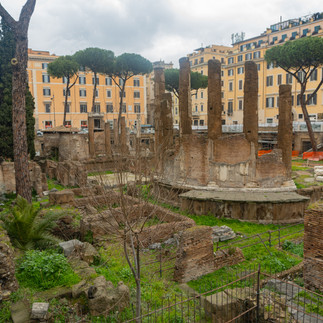

















































































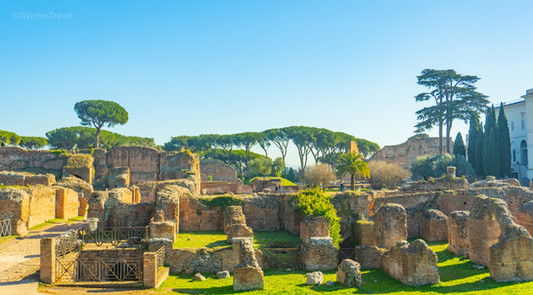







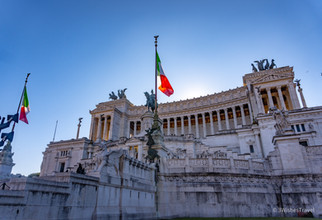


















































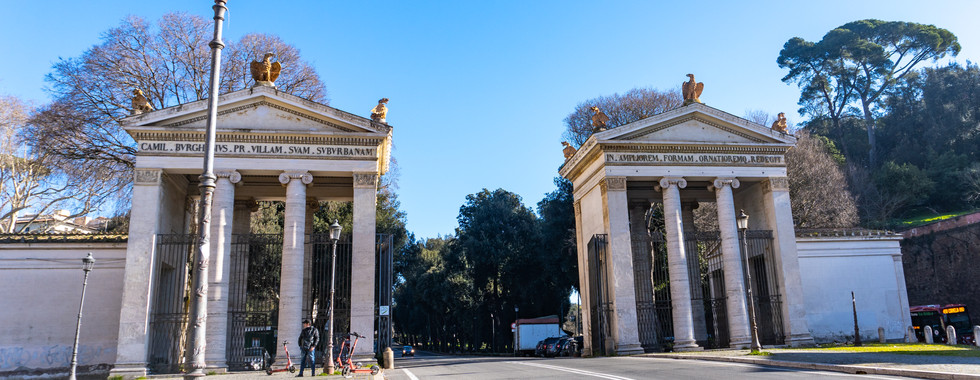


















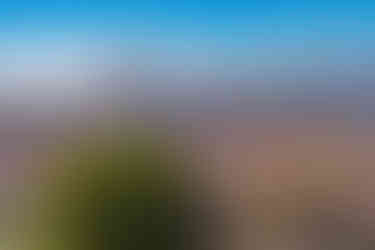
























































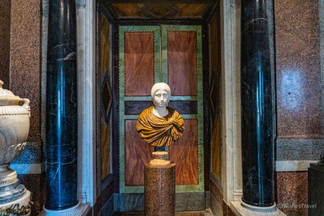





































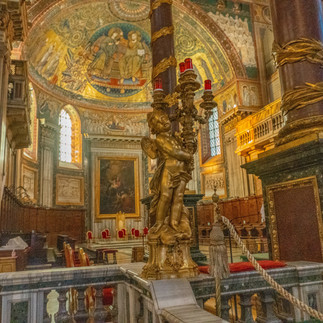
















😊I really loved the cat sanctuary! Every town/city should have one!